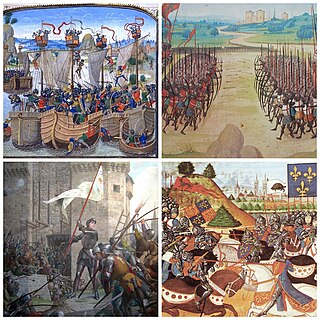 W
WThe Hundred Years' War was a series of conflicts between the kingdoms of England and France during the Late Middle Ages. It originated from disputed claims to the French throne between the English royal House of Plantagenet and the French royal House of Valois. Over time, the war grew into a broader power struggle involving factions from across Western Europe, fueled by emerging nationalism on both sides.
 W
WThe first phase of the Hundred Years' War between France and England lasted from 1337 to 1360. It is sometimes referred to as the Edwardian War because it was initiated by King Edward III of England, who claimed the French throne in defiance of King Philip VI of France. The dynastic conflict was caused by disputes over the French feudal sovereignty over Aquitaine and the English claims over the French royal title. The Kingdom of England and its allies dominated this phase of the war.
 W
WThe Caroline War was the second phase of the Hundred Years' War between France and England, following the Edwardian War. It was so-named after Charles V of France, who resumed the war nine years after the Treaty of Brétigny. The Kingdom of France dominated this phase of the war.
 W
WThe Lancastrian War was the third and final phase of the Anglo-French Hundred Years' War. It lasted from 1415, when King Henry V of England invaded Normandy, to 1453, when the English lost Bordeaux. It followed a long period of peace from the end of the Caroline War in 1389. The phase was named after the House of Lancaster, the ruling house of the Kingdom of England, to which Henry V belonged.
 W
WThe Agincourt Carol is an English folk song written some time in the early 15th century. It recounts the 1415 Battle of Agincourt, in which the English army led by Henry V of England defeated that of the French Charles VI in what is now the Pas-de-Calais region of France.
 W
WJohn the Fearless, Duke of Burgundy, was assassinated on the bridge at Montereau on 10 September 1419 during a parley with the French dauphin, by Tanneguy du Chastel and Jean Louvet, the dauphin's close counsellors.
 W
WThe assassination of Louis I, Duke of Orléans took place on November 23, 1407 in Paris, France.
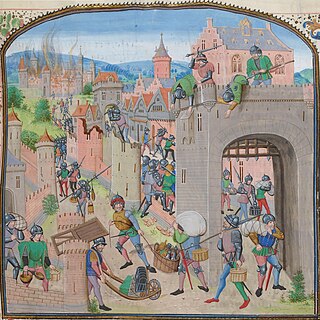 W
WAymon of Ortinge, also known as Amanieu d'Ortigue or Amanieu de l'Artigue, was a French mercenary captain during the Hundred Years War. His story is mentioned in the Chronicles of Froissart
 W
WBascot de Mauléon was a Basque soldier, mercenary and Brigand of the Hundred Years' War in the 14th century.
 W
WBernard de la Salle, was a French mercenary captain during the Hundred Years War. His story is mentioned in the Chronicles of Froissart
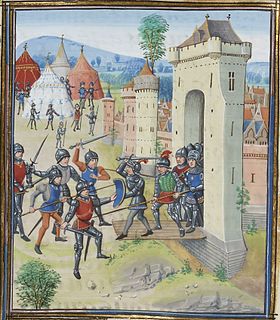 W
WThe Black Prince's chevauchée, also known as the grande chevauchée, was a large-scale mounted raid carried out by an Anglo-Gascon force under the command of Edward, the Black Prince, between 5 October and 2 December 1355 as a part of the Hundred Years' War. John, Count of Armagnac, who commanded the local French forces, avoided battle, and there was little fighting during the campaign.
 W
WThe Black Prince's chevauchée of 1356, which began on 4 August at Bordeaux and ended with the Battle of Poitiers on 19 September, was a devastating raid of Edward of Woodstock, Prince of Wales, the eldest son of King Edward III of England. This expedition of the Black Prince devastated large parts of Bergerac, Périgord, Nontronnais, Confolentais, Nord-Ouest, Limousin, La Marche, Boischaut, Champagne Berrichonne, Berry, Sologne, south of Touraine and Poitou.
 W
WBour de Breteuil was a Mercenary captain of the Hundred Years War.
 W
WBour Camus, or Camus Bour Bour Lesparre, also known as Camus the Bastard was a mercenary captain during the Hundred Years War. He was of Navarrese or Gascony origin.
 W
WThe Congress of Arras was a diplomatic congregation established at Arras in the summer of 1435 during the Hundred Years' War, between representatives of England, France, and Burgundy. It was the first negotiation since the Treaty of Troyes and replaced the 15 year agreement between Burgundy and England that would have seen the dynasty of Henry V inherit the French crown.
 W
WNaudon de Bageran, was a mercenary captain during the Hundred Years War.
 W
WThe dual monarchy of England and France existed during the latter phase of the Hundred Years' War when Charles VII of France and Henry VI of England disputed the succession to the throne of France. It commenced on 21 October 1422 upon the death of King Charles VI of France, who had signed the Treaty of Troyes which gave the French crown to his son-in-law Henry V of England and Henry's heirs. It excluded King Charles's son, the Dauphin Charles, who by right of primogeniture was the heir to the Kingdom of France. Although the Treaty was ratified by the Estates-General of France, the act was a contravention of the French law of succession which decreed that the French crown could not be alienated. Henry VI, son of Henry V, became king of both England and France and was recognized only by the English and Burgundians until 1435 as King Henry II of France. He was crowned King of France on 16 December 1431.
 W
WFrançois de Surienne was a Spanish mercenary and engineer, a specialist in fortification and artillery, who was active in Normandy and Burgundy in the 15th century. He was lord of Pisy and of Châtel-Gérard as well as bailli of Chartres and of Saint-Pierre-le-Moûtier. His name is generally given in Spanish as Francisco de Soriano, Sarriera, Sariñera, Siurana, and Sureda. Since he was born in Aragon, he was also known in France by his demonym, the Aragonese.
 W
WFrancois Hennequin, was a mercenary captain during the Hundred Years War.
 W
WHagre l'Escot was a Scottish mercenary captain during the Hundred Years War.
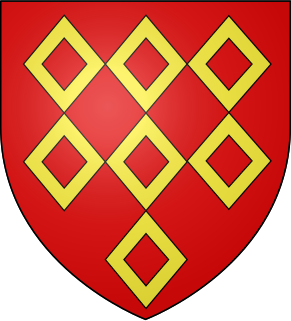 W
WHenry Ferrers, 2nd Baron Ferrers was the son of William Ferrers, 1st Baron Ferrers of Groby and his wife Ellen. Henry Ferrers has been described by one recent historian as "arguably the most successful member of his family" on account of his being the only one, in six generations, to have succeeded to his patrimony as an adult, thus "protecting his inheritance from the hazards of wardship."
 W
WJohn Creswey, was a mercenary captain during the Hundred Years War and was an Englishman.
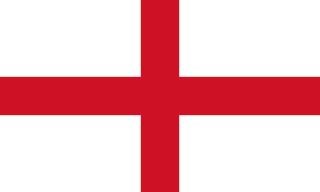 W
WThe Pale of Calais was a territory in what is now France, whose sovereigns were the monarchs of England following the Battle of Crécy in 1346 and the subsequent siege, until 1558.
 W
WThe Reims campaign took place during the Hundred Years' War. It occurred after the French de facto government rejected the terms of the Treaty of London and consequently Edward III of England organised and commanded an expeditionary army to gain by force what he had failed to win by diplomacy. On 28 October 1359 Edward landed at Calais, and advanced to Reims, where he hoped to be crowned king of France. The strenuous resistance of the citizens frustrated this scheme, and Edward marched into Burgundy, and then he made his way back towards Paris. Failing in an attack on the capital, he was glad to conclude, on 8 May 1360, preliminaries of peace at Brétigny, near Chartres. This treaty, less onerous to France than that of London, took its final form when Edward and John ratified the treaty in Calais on 9 October 1360. By it Edward renounced his claim to France in return for Aquitaine and other French territories in full sovereignty.
 W
WThe Revolt of Ghent (1379-1385) was an uprising by the city of Ghent against the count of Flanders and the king of France. Under the leadership of successively Jan Hyoens, Philip van Artevelde and Frans Ackerman, Ghent rebelled against Count Louis of Male, Duke Philip the Bold and King Charles VI of France. It was an expression of the growing power of the Third Estate and of the economic ties with England that had been strained by the Hundred Years' War. After six years of hard struggle, Ghent recognized the royal authority without being further punished. The dream of the autonomous city-state has failed and the era of royal centralization continued.
 W
WRobert Briquet was a mercenary captain during the Hundred Years War.
 W
WThe Terreaux Hoard is a hoard of coins discovered during excavations prior to the construction of an underground car park in place des Terreaux in Lyon in 1993. It was made up of 459 silver coins and 84 gold coins in an earthenware pot. Judging by the coins' date, it was buried c.1360 during the Hundred Years War. The coins include five écus of Philip VI of Valois, two moutons d'or of John the Good, a Venetian ducat and a number of florins. It is on display at the Museum of Fine Arts of Lyon.